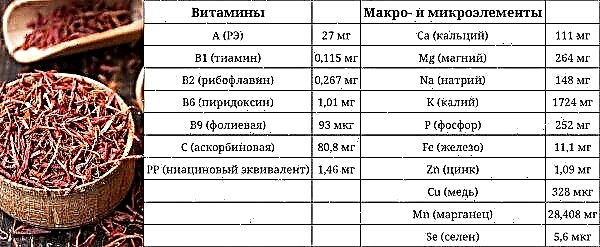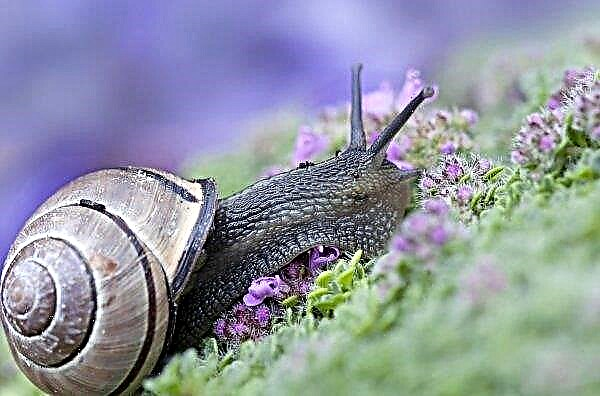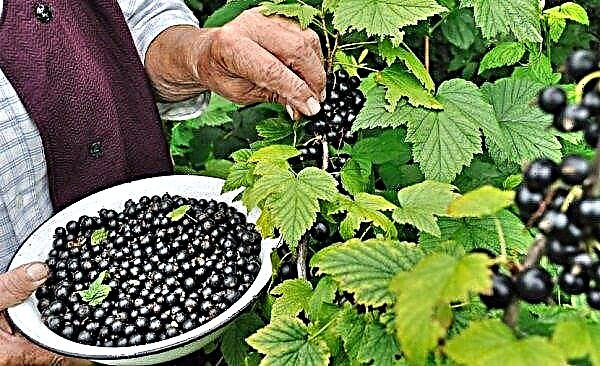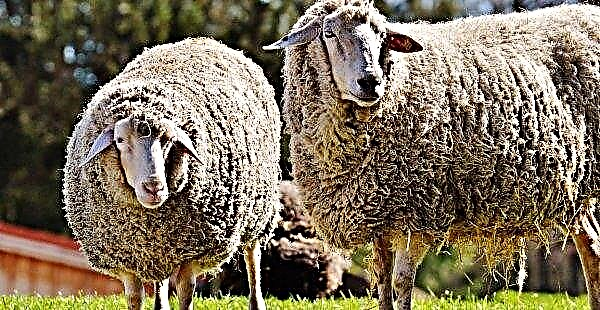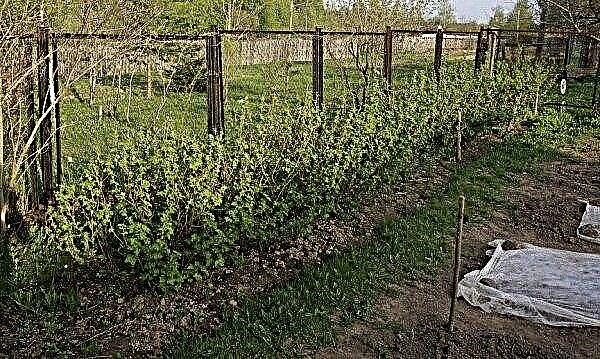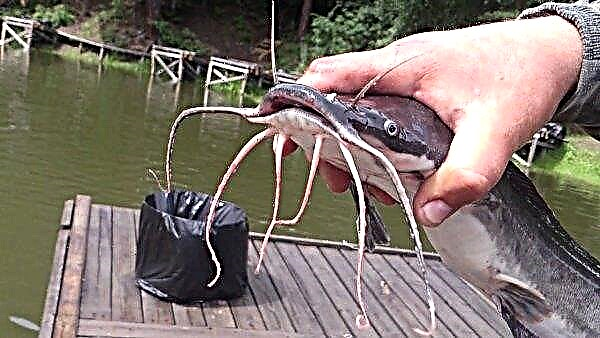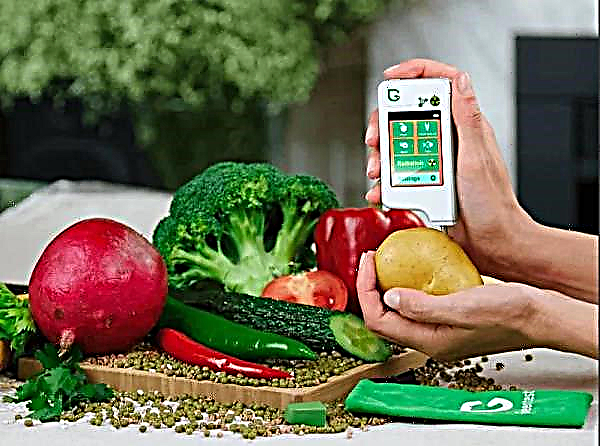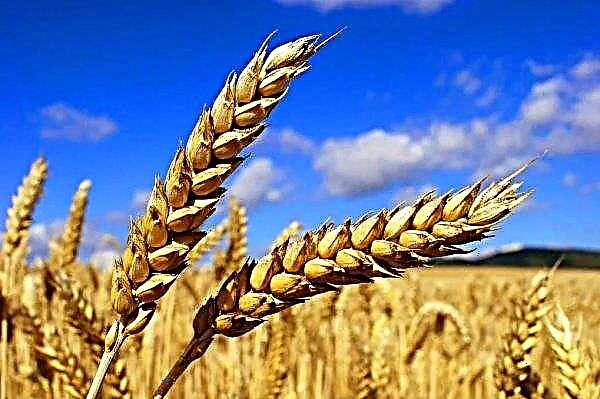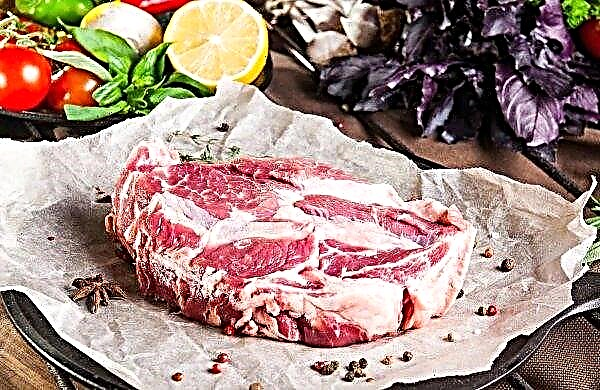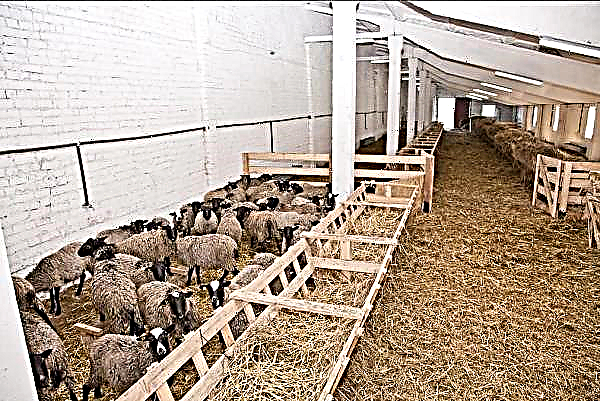The eggplant variety The Nutcracker is a relatively unpretentious crop. It takes root perfectly in different climatic zones - both in the central regions and in the south, and in more northern regions, for example, in the Urals and Siberia. About the main advantages and disadvantages, as well as the rules for the cultivation of these eggplants, read below.
Description and characteristics of the Nutcracker variety
The variety belongs to early crops. From the moment of transplanting seedlings into the ground until the fruiting begins, an average of 45-50 days pass. With the seed propagation method, from the sowing of the seeds to the beginning of fruit ripening, an average of 100 days passes. The bushes are medium spread, in the open ground their height reaches 1 m, and in the closed - 1.5 m and above.
Due to its large size, this vegetable needs a rather extensive feeding area - 1–1.2 m². To increase productivity, you need to pinch eggplant at a height of 90 cm in greenhouses and 40 cm in open ground. Foliage of medium density, almost round in shape, green, strewn with small dense villi.
Flowers are large, bisexual, solitary or collected in inflorescences of 2-3 pcs. As the crop is harvested, new flower buds and fruits are formed. The fruiting period can last up to frost. In total, for the entire growing season, 1 bush can produce from 10 to 20 kg of fruit.Did you know? In Europe, eggplant began to be eaten only after the discovery of America and communication with the Indians who cultivated this plant and ate its fruits. Until this moment, the plant was used only in landscape design.
The fruits of a spherical and pear-shaped form reach a length of 14-15 cm. They are painted in dark purple. Each fruit weighs an average of 240–250 g. With a decrease in the load on the bush by removing the ovary, the fruits can reach larger sizes and weigh 750–800 g. The pulp of the vegetable is creamy with a greenish tint, the structure of the pulp is tender.

One of the undoubted advantages of hybrid varieties is the lack of bitterness characteristic of eggplant. The fruits of the Nutcracker variety are excellent for preparing second courses, preservation and snacks.
Advantages and disadvantages of the variety
A real assessment of the strengths and weaknesses of the plant makes it possible to calculate the profitability of its cultivation, as well as adjust the quality of the soil and conditions in order to collect a good crop as a result.
- The main advantages of the eggplant variety Nutcracker:
- high productivity and commercial quality of fruits;
- the possibility of growing in open ground even in adverse areas;
- relative unpretentiousness in leaving;
- long regular formation of ovaries, which allows you to get a crop for several months.
The culture has practically no drawbacks, with the exception of the lack of the ability to use seed material collected independently for cultivation in the next year, since this plant belongs to hybrids and is not able to reproduce the positive qualities of maternal specimens in the second generation.
Cultivation methods
A variety of eggplant Nutcracker can be sown immediately in a permanent place or use the traditional seedling method. The first method is more suitable for cultivation in greenhouse conditions and in the southern regions, and the second is suitable for cultivation in the northern regions and in the central zone.
Reckless
Seeds can be sown at the end of April - mid-May when grown indoors and at the beginning - mid-June when grown outdoors. The seedless method allows you to get plants that are more resistant to temperature fluctuations. Eggplant planted in this way comes into the fruiting stage later than with the seedling method, but it lasts longer. For sowing, you need to select a site of medium light, with light fertile soil. Ideal - loam and sandstone. If there is heavy soil on the site, the situation can be corrected by adding 10 kg of sand and peat to each square meter.
Eggplant planted in this way comes into the fruiting stage later than with the seedling method, but it lasts longer. For sowing, you need to select a site of medium light, with light fertile soil. Ideal - loam and sandstone. If there is heavy soil on the site, the situation can be corrected by adding 10 kg of sand and peat to each square meter.
Soil preparation should be carried out in the fall after harvest. The soil must be thoroughly pooled to a depth of 20 cm and treated with a 3% solution of copper or iron sulfate. After a week, add 10 kg / m² of manure and 50 g of superphosphate, then loosen it to the same depth again.
In the spring 2 weeks before planting, do the same. At the stage of spring soil preparation it is possible to replace copper sulphate with the Fitosporin preparation. Seed consumption per 1 ha - 3 kg, seeding depth - 3-5 cm, depending on the type of soil (on light soils, the seeding depth should be greater than on heavy soils). The distance between the seeds is 10 cm.
When sowing, along with seeds for each square meter, 40 g of superphosphate must be added. To seed, you need to form long furrows. In the phase of the appearance of 2 real sheets, make the first thinning, eliminating weak sprouts. The final arrangement is carried out in the appearance phase of the 5-6th leaf. If too large a gap is formed between the plants, it must be closed by planting a specimen from a more thickened place.Important! Seeds with a seedling-free growing method do not require additional processing. They need to be sown in the soil dry.
Seedling
To calculate the sowing date, it should be borne in mind that seedlings cannot be planted in a permanent place earlier than mid-June for open ground and earlier than mid-May for closed ground. Germination of viable sprouts takes an average of 80 days. Accordingly, the sowing of seeds should be in late February - early March.

Seeds for 4 hours must be soaked in water, then the emerging seeds should be discarded. Wrap the planting material, which has sunk to the bottom, in gauze soaked in a 0.01% solution of potassium humate, before sprouting.
Another preparation option involves the use of fluctuations in day and night temperatures, which also allows you to quickly start the vital processes of the seed. To do this, planting material needs to be kept in the daylight on a well-lit window sill, and placed overnight on the refrigerator door, previously wrapped in gauze.
Important! The root system of eggplant is very fragile and does not tolerate picking.
For sowing seeds, mix garden soil with the following additives:
- peat;
- sand;
- compost.
All components must be in equal proportions. To disinfect the soil, you need to spill the ash solution: add 10 g of ash to 10 liters of water and boil for 30 minutes. Pour boiling solution immediately into the soil. This technique allows not only to disinfect the soil, but also to nourish it with useful trace elements, as well as give it the necessary structure.
For seed germination it is better to use peat cups or coconut tablets. Seeds in them should be placed 1–2 pcs. at a depth of 1.5 cm. After sowing, the glasses should be covered with cling film and left in a dark room, where the air temperature is maintained at +25 ... + 27 ° C, until the first shoots appear.
Seed germination takes about 1-2 weeks. During this time, planting should be ventilated daily for 15 minutes and, if necessary, moisten the soil from the spray with warm water (+ 25 ° C).
Seeding and seedling care
With the advent of the first sprouts, seedlings need to be transferred to a lighted room, and the film completely removed. The temperature in the room should be gradually reduced by 2–5 ° С, and also for seedlings to provide a difference of day and night temperatures of 3 ° С (night - lower than day).
If the plants were sown in a common box, then they are transplanted in the phase of the appearance of the 1st true leaf. Seedlings should be buried in a separate container to cotyledon leaves. It is advisable to carry out the transfer of plants with part of an earthen coma. When grown in separate containers, plants placed in 2 pieces should be thinned out. If both seedlings are complete - transplant one of them into a separate glass.Did you know? Eggplant juice has long been used as an antiseptic for the healing of infected wounds.
At the phase of the appearance of the 2nd true leaf, the first top dressing is carried out. To do this, you can use a solution of mullein or bird droppings. Manure for fertilizing seedlings must be diluted with water in a ratio of 1: 3 so as not to burn the roots. Consumption per plant - 200 ml. If there is no organics, you can use the solution "Solution" in accordance with the instructions.

Daylight hours for seedlings should last 12-14 hours. If necessary, it is necessary to organize additional illumination with phytolamps or LEDs. It is necessary to moisten, if necessary, after drying the top layer of soil by 1 cm - on average 1 time per week. Each plant takes 200-300 ml of water. The soil must be loosened periodically. Seedling is ready for planting when it reaches a height of 15 cm and has 6 true leaves.
With the advent of the 5th leaf, seedlings begin to harden. For this, the air temperature in the room is gradually reduced to a similar outdoor temperature. When this stage is completed, put seedlings on the balcony (in the garden) during the day and bring them home for the night. It is necessary to constantly increase the interval of stay in the open air, capturing night time. By the time of transplantation, seedlings should be free to spend 24 hours on the street.
The stages of preparing the soil for planting and selecting a site for seedling and seedling methods for growing eggplant are identical. Plants with the seedling method of growing should be placed at a distance of 1 m from each other, and between rows should be 80–90 cm. The planting depth will depend on the size of the rhizome. When grown in peat pots, seedlings should be placed in the soil directly in them. It is necessary to bury sprouts in the soil to cotyledon leaves.
Further plant care
Immediately after the transplant, you need to water the plants and install nearby supports. Each hole takes about 1 liter of water. Immediately after absorbing moisture, the soil must be loosened and mulched with compost. The height of the mulch layer is 8 cm.
This approach will ensure the preservation of moisture in the soil and protect the plant from the spread of pests. In the future, caring for plants is not difficult and involves the implementation of several main agricultural activities:
- regular moderate soil moisture with loosening and mulching;
- fertilizing in accordance with the stages of the growing season and the needs of the plant at this time;
- the formation of bushes and the organization of support;
- work on the prevention of diseases and pests.

Watering
The first watering after the transplant should be done a week later, not earlier. If there is good mulch in the future, it should be watered 1 time per week, and if it is hot outside, then 2 times a week. Also, the intensity of irrigation should be increased at the stage of pouring fruit. Water consumption per bush is 2-3 liters, depending on soil quality and weather conditions.
The temperature of the water must match the ambient temperature. The best option is to organize a drip irrigation system. This will help to avoid moisture on the leaves and reduce their own energy consumption at all stages of plant vegetation.
Important! A variety of eggplant Nutcracker does not tolerate waterlogging of the soil. With an excess of water, the plant is affected by root rot, which is difficult to treat.
Fertilizer application
Eggplant top dressing needs to be combined with watering. The first time after transplantation, the plants are fertilized after 2 weeks. At this stage, they need nitrogen. You can irrigate with a solution of urea (40 g per 10 liters of water) or use a solution of mullein. Urea solution to make 2 l for each plant, mullein - 0.8–1 l.
Further, the interval between feeding is 3-4 weeks. Starting from the second feeding, plants need to be fed with nitrogen-free fertilizers containing mostly phosphorus and potassium. You can use this composition: add 10 g of superphosphate and 5 g of potassium salt to 10 liters of water.
For each plant, add 2 l of liquid. Replace this fertilizer can be ash solution, cooked, as in the disinfection of the soil. After cooling, it must be filtered and filled with 3 liters in each well. The ash solution can be alternated with a yeast solution.
To prepare it in 5 l of water (temperature + 30 ° C), add:
- 12 g of yeast;
- 1 tbsp. l Sahara;
- 300 g nettles.
Insist the solution for 3 days, then strain and add water to get a total volume of 10 liters. Such a solution to make 2 liters per bush.
Bush formation
Tall bushes need quality support and formation. Without these procedures, productivity will drop markedly. The bushes must be fixed to the support at 3 points at a distance of 10 cm. At a height of 40 cm, they need to pinch and leave only the most powerful shoots. At the same stage, all leaves below the first node should be removed.

In greenhouses, bush growth is stopped at a height of 90 cm and form it into 1 stalk. This helps to save space in the room and reduce the risk of contracting diseases due to thickening of plantings.
Works on the formation of the bush are carried out with a sharp tool. After each plant, it is necessary to further disinfect the instrument. Slices of plants should be dusted with a mixture of ash and Fundazole (in a 1: 1 ratio).
Culture-typical diseases and pests
The Nutcracker variety has a good resistance to diseases, but if you violate the rules of agricultural technology can be affected:
- Late blight - develops in a moist, warm environment. It can be eliminated by removing the affected parts of the plants and double treatment with a 3% solution of Bordeaux fluid with an interval of 20 days.
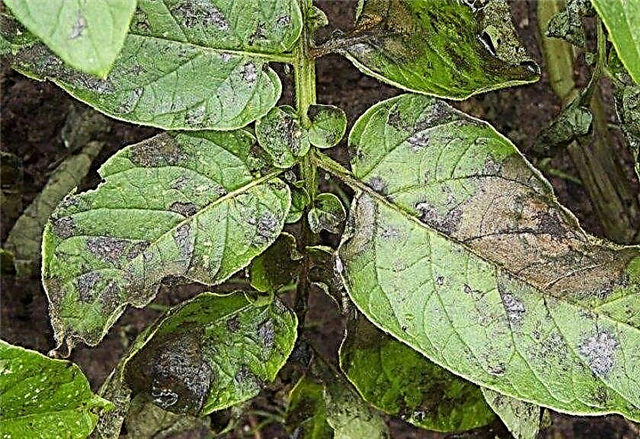
- Root rot - develops with too frequent heavy watering. Affected parts of plants must be removed. Powder all the plants on the plot with a mixture of ash and Fundazole. Replace the top 5 cm with a mixture of peat and sand. After 2 weeks, soil treatment with a 3% solution of Bordeaux fluid. Non-viable plants should be completely removed from the site.

- Tobacco Mosaic - A viral disease that destroys chlorophyll in a plant body. The disease is not treated, it is transmitted through inoculum, with the juice of diseased plants healthy, through contaminated soil. The only thing that can be done is to cut off the affected parts of the plants with an alcoholized knife and treat the plantings with Fitosporin according to the instructions. However, this does not guarantee that virus-free cells will not remain in healthy-looking tissues.
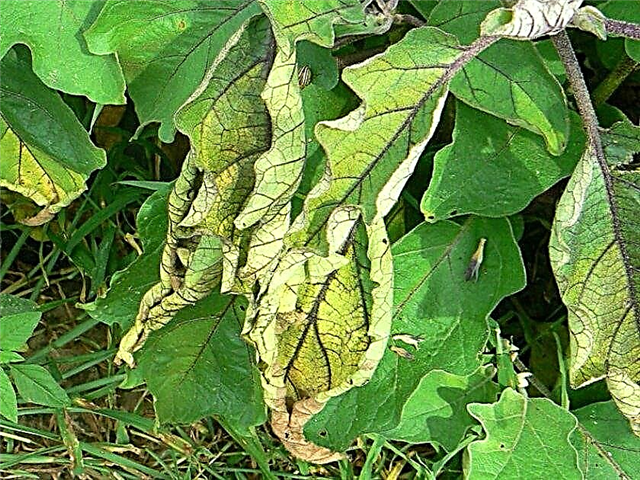
Among the pests for the Nutcracker, the following are dangerous:
- aphid - eliminated with the help of a 0.03% solution of the drug "Aktara";
- whitefly - the aforementioned drug will also be effective against it.
Did you know? Aphids can bring not only harm, but also benefit. This insect feeds on plant sap, which contains high levels of sucrose, which inhibits photosynthesis. Foliage with sticky secretions of aphids, which it produces in the process of life, after falling off, begins to rot and releases nitrogenous compounds into the soil.
Harvesting
Harvesting begins when the fruits reach technical maturity. You should not delay harvesting, otherwise the fruiting time will be reduced. Remove fruits from the bushes with a sharp tool, disinfected in alcohol. Fruits must be cut together with the stalks as close to the stem as possible, and the slices should be treated with wood ash.
The eggplant variety The Nutcracker is attractive for its high productivity in various climatic conditions. In addition, this culture, in comparison with its analogous ones, is notable for its low requirements in terms of care.




